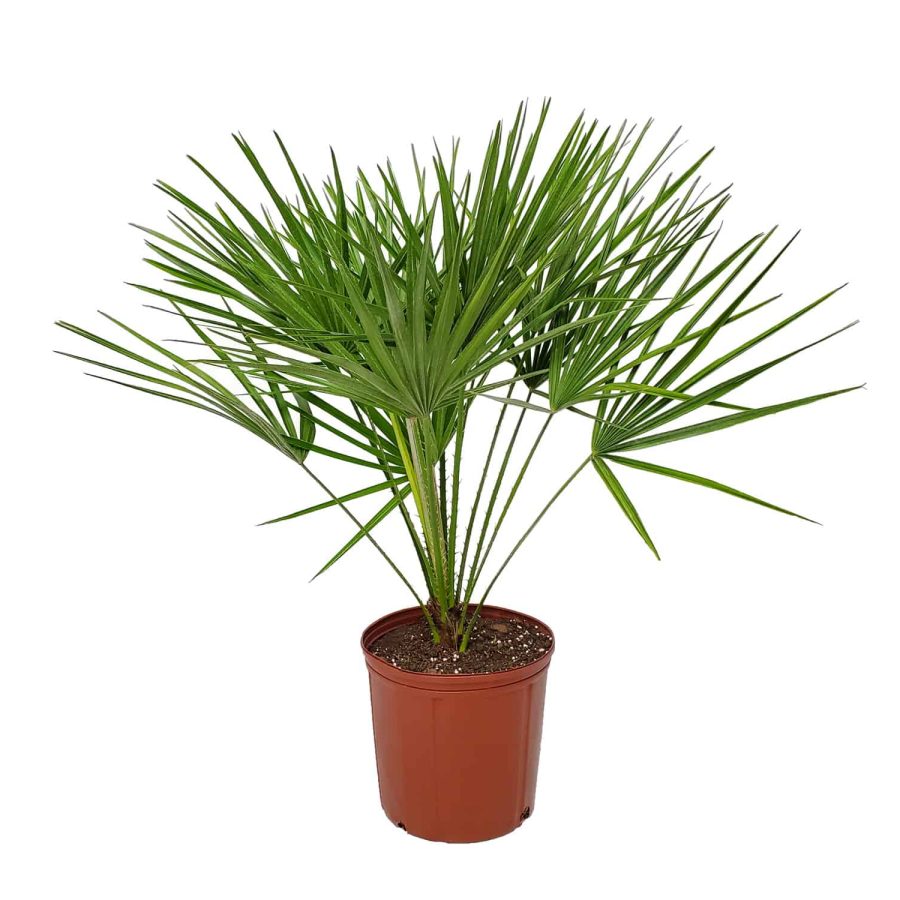How to Care for European Fan Palm
A Comprehensive Guide
The European Fan Palm is popular with indoor and outdoor plant enthusiasts alike. With beautiful fronds and distinct tropical appearance, a European Fan Palm can make a great addition to any space. Their low maintenance and slow growing, make them a great choice for a beginner to an expert plant lover.
Native to the Mediterranean, this palm can thrive in a wide range of environments. This guide will provide you with the information you need to help take care of your European Fan Palm. By following these tips, you can ensure that they thrive and continue to enhance your home or garden.
European Fan Palm
Rated 4.97 out of 5From $54.99 This product has multiple variants. The options may be chosen on the product page
1. Choosing the Right Location
The first step in ensuring the health of your European Fan Palm is selecting the ideal location. These palms are quite adaptable, but they do have some preferences. Whether you’re growing them indoors or outdoors, here are a few things to keep in mind:
Indoor Care:
European Fan Palms can make a great choice for an indoor palm tree. Place your palm in a room with bright, indirect sunlight. These plants thrive when they receive ample but filtered light.
Maintain a temperature range of 65-75°F (18-24°C) during the day and avoid exposing them to cold drafts.
Outdoor Care:
Plant your Fan Palm in well-draining soil. They prefer slightly acidic to neutral soil with good drainage.
Make sure your outdoor palm receives partial shade to protect it from harsh afternoon sun, especially in hot climates.
2. Watering
Proper watering is crucial to the health of your European Fan Palm. Fan Palms are drought-tolerant once established, but they still require consistent moisture, especially during their early growth stages. Here’s how to strike the right balance:
Water your Fan Palm thoroughly when the top inch of soil becomes dry. Be sure not to let it sit in standing water, as this can lead to root rot.
Remember to make changes to your watering habits throughout the year. During the growing season (spring and summer), water more frequently. In the dormant period (fall and winter), reduce the watering frequency but do not let the soil completely dry out.
3. Fertilization
Fan Palms benefit from regular feeding to ensure they receive essential nutrients. Use a balanced, slow-release fertilizer every 12-14 weeks.
European Fan Palms prefer more fertilizer in the spring and summer when they are actively growing.
4. Pruning and Maintenance
People generally know European Fan Palms for their low maintenance. Though, some care can be good to ensure they are always in top shape:
Trim dead or damaged fronds at the base using clean, sharp pruning shears. This not only keeps the plant looking tidy but also encourages new growth. Pruning is best done in the spring when they are naturally wanting to flush new growth.
Prune away any offshoots or “pups” that develop at the base of the plant to control its size.
5. Repotting
European Fan Palms have a slow growth rate, and they don’t require frequent repotting. Repot once you notice that the roots have outgrown the current pot. The time between repotting can vary so be sure to check. Once you determine you need to repot these instructions will help you with it:
To start, choose a slightly larger pot with good drainage. We recommend selecting a pot roughly 2″ larger than the previous pot with good drainage holes.
Next, fill one-third of the new pot with your fresh potting soil mix. Then, gently remove the plant from its old pot, loosen the roots, and place it in the center of the new container.
Remember to leave a few inches of space between the top of the root ball and the top of the new pot. Now, fill your pot with the fresh potting soil mix completely covering the root ball and tamp down the soil around the root.
Lastly, water the plant thoroughly and allow the excess water to drain.
6. Pest and Disease Management
European Fan Palms have a great resistance to pests and diseases. However, they can still face some common issues like spider mites or scale insects. If you notice any problems, address them promptly:
Use a neem oil solution or insecticidal soap to treat pests.
Isolate an infected plant to prevent the issue from spreading to other indoor or outdoor plants.
7. Cold Protection
European Fan Palms are hardy down to USDA hardiness zone 8, but they can be sensitive to frost. In colder regions, protect your outdoor palm by covering it with a frost cloth or moving it indoors during chilly winter months.
Toxicity
The ASPCA considers European Fan Palms to be non-toxic to dogs, cats, and horses.
Words of Encouragement
To all our plant parents, remember that patience is key. Whether you have experience with palm plant care or not. Following the plant care guild will put you on a path to success. With time and care, your European Fan Palm will be a beautiful addition to your plant collection.


